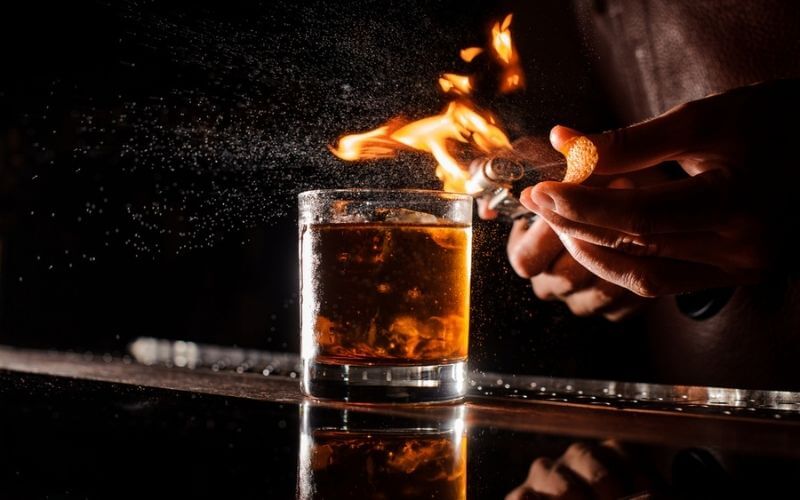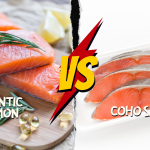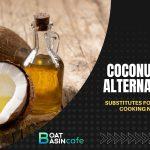Who doesn’t love a good cocktail?
The name conjures the image of a colorful drink with an array of flavors and concoctions, a dimly lit bar, a certain sparkly dress named after the beverage, and a night full of possibilities.
And although cocktails are seen as a ‘girly’ drink, don’t let the cutesy glasses and garnish fool you─ these drinks are potent. But have you ever sat there, nursing your drink, waiting for someone, and then wondered,’ Why is it called a cocktail? How did this name come up?’
This article takes a deep and boozy dive into the history of cocktails. We’ll talk about cocktails origin, how (we think) it got its name, as well as the anatomy of the beverage.
Whether you are a bartender in training, or just someone who is into the history and etymology of food and drink, this will be a useful and interesting article to go through!
A Brief History of the Cocktail

Truth be told, there is no clear-cut mention of the invention of cocktails in history. In fact, the idea of mixing alcoholic spirits with flavored juices, syrups, or liquors must have been born since the discovery of fermentation in the age of antiquity.
Cocktails are incredibly old; even appearing in Homer’s Iliad in depictions of slaves making concoctions of wine, honey, and aromatics. Ancient Chinese and Indian cultures also have records of combining fermented spirits with sugar, citrus fruits, and whole spices.
While contemporary cocktails with their little umbrellas are seen as an American invention, it is more likely that they have their origin in British punches; big bowls of spirits mixed with juices, herbs, and spices. In fact, the term cocktail was first used to refer to a drink in a British newspaper in 1798.
But the term was properly defined later in 1806 in New York. This definition sounds more like the cocktails we know and love today and describes it as an alcoholic beverage made by mixing spirits, bitters, sugar, and water. The sugar nowadays comes from syrups and juice, and the flavors from infusions and liqueurs.
Throughout European colonization, and later the introduction of different spirits during WWII, things like rum and mezcal were used as spirits. Ice was also sold commercially in the 19th century and this led to cocktails being a chilled drink meant to be drunk in warm weather.
The invention of different fermentation and distillation, as well as the discovery of different spirits from across the world, as well as add-ins like exotic fruit and spices, resulted in a greater range of cocktails being created.
As the profession of bartenders grew, individuals began to experiment with different combinations and flavors, leading to local cocktails and new drinks.
Nowadays, the idea of molecular mixology is on the rise, so bartenders and chemists use science to create innovative cocktails, taking this timeless concoction to new heights.
So Why is the Drink Called a Cocktail?

The short answer to this question is that no one is sure how the term was coined. The etymology of the word cocktail is unclear but there are lots of theories, some of which are more credible than others. Let’s get into these theories:
The Eggcup Theory:
This theory comes from an online Etymology Dictionary. According to the theory, the word cocktail comes from a mispronunciation of the French word for egg cup coquetier which is pronounced as cock-tay in English.
It is derived from the idea that a certain apothecary served a mix of bitters and brandy in eggcups in the 18th century.
The Tavern Dregs Theory:
In the 17th and 18th centuries, tavern owners would mix the remains (or dregs) of spirits and other alcoholic drinks in the barrels and sell the mixture at a lower price. This drink would be called cock tailings as the tap or spigot of the barrel was referred to as the cock.
The Docked Horse Tail Theory:
In the 17th century, animal tails resembling those of a rooster or cock were highly coveted. Coach and hunting horses often had their tails docked for practical purposes, so they looked like those of a rooster.
Racehorses also had docked tails and the ones with cocked tails were often seen as perky and energetic. As the drink would have the same effect on people, the term cocktail stuck.
Another theory comes from the idea that the process of docking changed the horses’ tails. Similarly, the spirit was altered by adding liquor and spices, so a cocktail was used to refer to adulterated spirits.
The ‘Other’ Horse Tail Theory:
This is a pretty distasteful theory, but experts suggest it comes the closest to the truth. Like we’ve established before, horses that could carry their tail well were popular. Also, racehorses have to be perky, skittish, and alert.
To achieve these effects, a piece of ginger was often used as a suppository for racehorses to make them appear lively, giving them the cock tailed appearance.
As drinks were often served at horse races, drinks that had things like ginger, cinnamon, cloves, and other such aromatics added came to be known as cocktails.
The George Bishop Theory:
According to George Bishop’s book, the term cocktail comes from the English word cock-tail which was used in the 18th century to refer to a desirable woman, yet considered impure. The word was then used by ex-pat Englishmen to refer to the American habit of adding things like ice and liqueur to British gin.
As using ice in booze became normalized, the hyphen in the term was removed and the word was reintroduced back into English vocabulary. This isn’t the most credible theory but is certainly interesting.
The Mexican Tavern Theory:
Another delightful theory was published in 1936, which speaks of English sailors who were served mixed drinks in a Mexican tavern centuries ago. The drinks were mixed and stirred using the root of a plant with a distinct shape, known as Cola de Gallo.
The meaning in English? Cock’s tail.
The Anatomy of the Cocktail
Watching a bartender whip up a cocktail can make it seem like a complex art form, but as with most things, there is a formula. Once you nail down this formula, you can make any kind of cocktail and even deviate from the formula to make your own custom concoctions.
2 ounces of spirit + 1 ounce of sweet + 1 ounce of sour
The spirit is usually something like gin, rum, vodka, tequila, or whisky. The sweet element often comes from simple syrup, but any flavored syrup works well too like grenadine, maraschino liqueur, limoncello, or amaretto─ anything that is very sweet and sugary.
The sour element is generally something like lemon or lime juice. Citrus is always a good choice, especially freshly squeezed. You can use the bottled version, but it won’t taste as good.
Fill your cocktail shaker with ice, add the spirit, syrup, and lemon juice, and then shake for 15-20 seconds. Strain into a cocktail glass, garnish with some citrus peel or a cute little umbrella, and enjoy!
You can get all innovative and use things like honey and honey substitutes, ginger, chocolate, and coffee liqueur, instead of simple syrup. You can even ditch the lime juice for something mint syrup or crème de menthe. Some boozy recipes also call for muddled fruit, seltzer, and even sprigs of mint.
Using this formula, you can easily make a classic cocktail like Daiquiri, Whiskey Sour, Margarita, and Sidecar right in your own kitchen.
Still Got Questions
Here you will find answers to questions people have about all things cocktail-related.
01. What are the Main Components of a Cocktail?
A cocktail is made of three components; a base (the spirit), the modifier which adds smoothness (the sweet element), and the flavoring (the sour element).
02. What are the 6 Major Cocktails?
The six basic cocktail drinks are the Daiquiri, the Jack Rose, the Manhattan, the Martini, the Old Fashioned, and the Sidecar.
03. Why is It Called a Molotov Cocktail?
The Molotov cocktail has a negative connotation, coined after Soviet foreign minister Vyacheslav Molotov. The weapon is made by combining things like broken glass, nails, and some kind of spirit in a bottle and lighting it before deploying it.
04. Why are They Called Cocktail Peanuts?
Virginia peanuts are also known as cocktail peanuts and are roasted in oil. No one is fully sure how they got their names, but it is most likely because they are served in bars and are often nibbled along with drinks.
05. How Long Do Bottled Cocktails Last?
It is generally safe to drink bottled cocktails for 3 months or whatever is mentioned on the label.
In Essence
There are lots of theories about the history of the term cocktail, some of which are stranger than others. There isn’t any confirmation that any of them are true but they are certainly fun to speculate on.
So the next time you’re enjoying a Sidecar alone, ask yourself, “Why is it called a cocktail?” and decide which theory makes the most sense.






